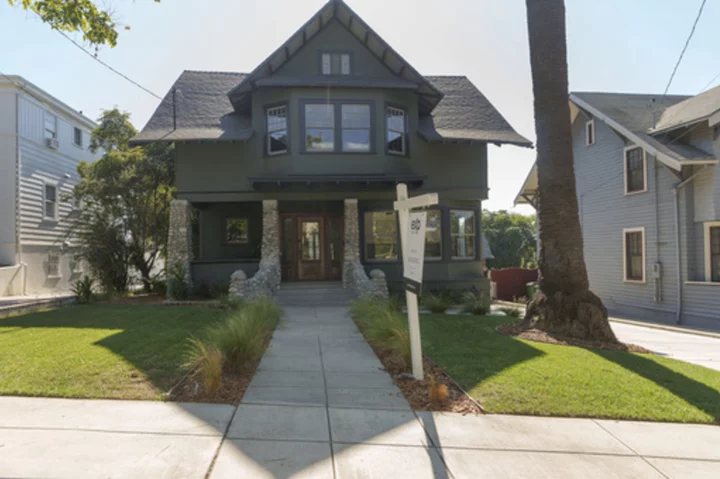LOS ANGELES (AP) — The average rate on the benchmark 30-year home loan fell for the third week in a row, welcome news for house hunters facing a market held back by persistently high prices and a near-historic low number of homes for sale.
The latest decline brought the average rate on a 30-year mortgage down to 7.44% from 7.5% last week, mortgage buyer Freddie Mac said Thursday. A year ago, the rate averaged 6.61%.
As mortgage rates rise, they can add hundreds of dollars a month in costs for borrowers, limiting how much they can afford in a market already out of reach for many Americans. They also discourage homeowners who locked in far lower rates two years ago, when they were around 3%, from selling.
The combination of rising mortgage rates and home prices have weighed on sales of previously occupied U.S. homes, which fell in September for the fourth month in a row, grinding to their slowest pace in more than a decade.
Homeowners that locked in mortgages rates closer to 3% are less willing to move and take on a mortgage at near twice that level, decreasing even further the number of homes for sale.
“The combination of continued economic strength, lower inflation and lower mortgage rates should likely bring more potential homebuyers into the market,” said Sam Khater, Freddie Mac’s chief economist.
This average rate on a 30-year mortgage is now at the lowest level it’s been in eight weeks, when it was 7.31%.
Borrowing costs on 15-year fixed-rate mortgages, popular with homeowners refinancing their home loan, also declined, with the average rate falling to 6.76% from 6.81% last week. A year ago, it averaged 5.98%, Freddie Mac said.
The average rate on a 30-year home loan climbed above 6% in September 2022 and has remained above that threshold since, reaching 7.79% three weeks ago. That was the highest average on record going back to late 2000.
Rates have been mostly risen in recent weeks along with the 10-year Treasury yield, which lenders use as a guide to pricing loans. Investors’ expectations for future inflation, global demand for U.S. Treasurys and what the Fed does with interest rates can influence rates on home loans.
The yield on the 10-year Treasury was at 4.47% in midday trading Thursday, down from 4.54% late Wednesday. Just last month, it was above 5% at its highest level since 2007.

